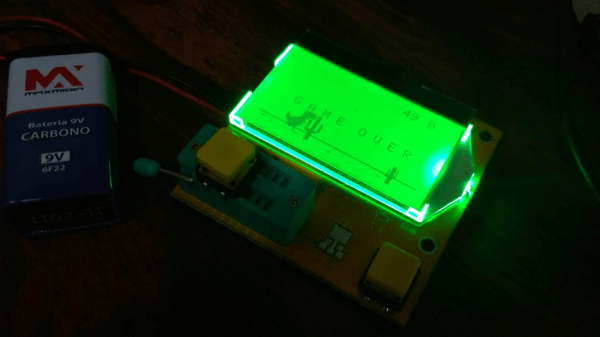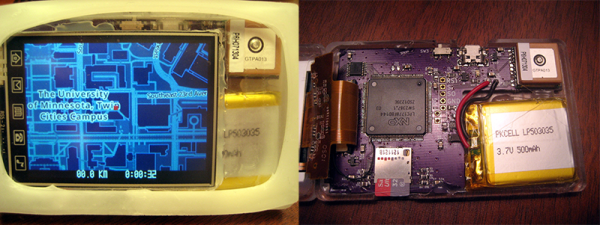If you’ve ever spent time online buying electronic doodads — which would mean almost all of us — then sooner or later, the websites get wind of your buying sprees and start offering “suggested” advertisements for buying more useless stuff. One commonly offered popular product seems to be a universal component tester, often referred to as a “Mega328 Transistor Tester Diode Triode Capacitance ESR Meter”. These consist of an ATmega328, an SPI LCD display, a Button, a ZIF socket and a few other components. Almost all of them are cheap clones of the splendid AVR-TransistorTester project by [Markus Frejek]. [Robson Couto] got one of these clone component testers, and after playing with it for a while, decided to hack it and write a T-Rex runner game for it.
The T-Rex runner game is Chrome’s offering for you to while away your time when it can’t connect to the internet. It needs just one button to play. This is just the kind of simple game that can be easily ported to the Component Tester. The nice take away from [Robson]’s blog post is not that he wrote a simple game for an ATmega connected to an LCD display, but the detailed walk through he provides of the process which can be useful to anyone else wanting to dip their feet in the world of writing games.
After a bit of online sleuthing and some multimeter testing, he was able to figure out that the LCD controller chip was connected to Port D of the ATmega, which meant the use of software SPI via bit-banging. He then looked inside the disassembled firmware to find writes to Port D to figure out pin assignments. Of course not long after all this work he found a config.h file with the pin mappings.
Armed with this information he was able to use the Adafruit ST7565 library to drive the LCD, but not before having to flip the image. The modified fork of his ST7565 library is available on GitHub. His game code is also available, but reading through the development process is pretty interesting. Check out a video of the Runner game in action after the break.
In an earlier post, we did a product review of one of these cheap Transistor Testers, and if you have one of these lying around, give [Robson]’s game a spin — it could be handy while you wait for your reflow oven to finish its soldering cycle.












